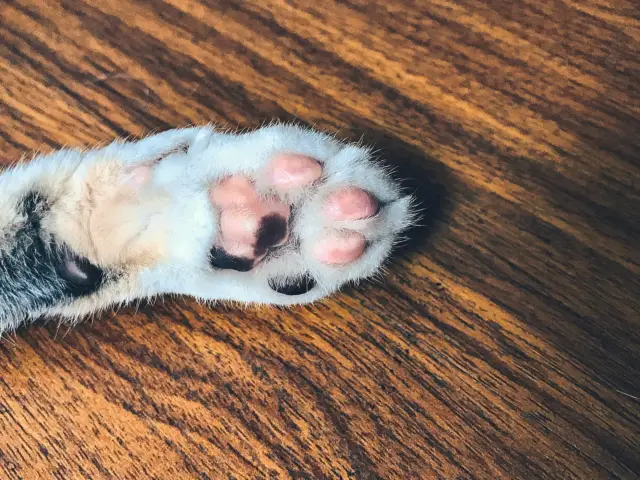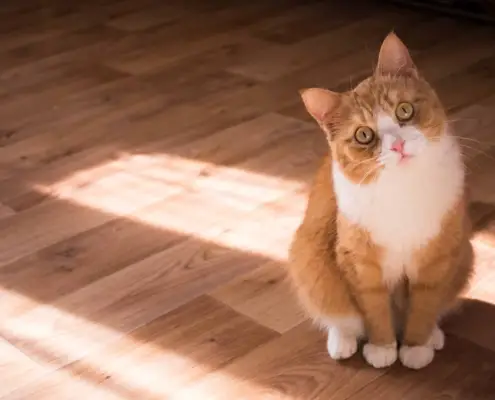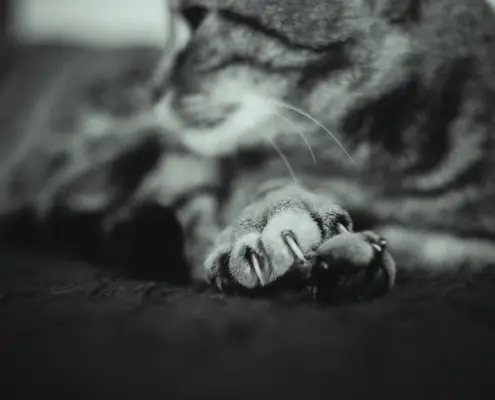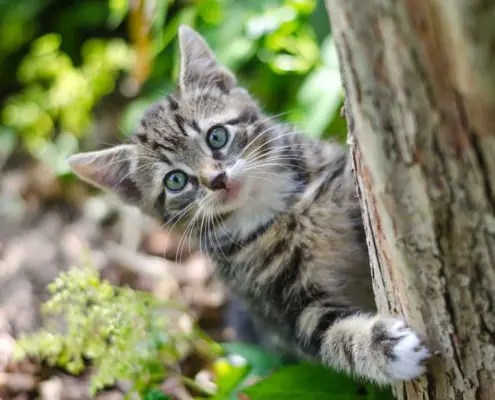
Cats are known for their unique behaviors, and one of the most intriguing is kneading. Kneading is when a cat pushes their paws in and out against a soft surface, often accompanied by a rhythmic motion. This behavior resembles the kneading of dough, hence the name. But why do cats do it?
There are several reasons behind a cat’s kneading behavior. One theory suggests that it stems from their early days as kittens. When kittens nurse, they instinctively knead their mother’s belly to stimulate milk flow. As they grow older, this behavior may carry over into their adult lives as a way to seek comfort and security.
Another theory suggests that kneading is a way for cats to mark their territory. Cats have scent glands in their paws, and when they knead, they release pheromones onto the surface they are kneading. This scent marking behavior helps cats establish their presence and create a familiar environment.
The history and origins of kneading in cats
The origins of kneading in cats can be traced back to their wild ancestors. Wild cats, such as the African wildcat, engage in similar kneading behaviors as a way to create a comfortable nesting spot in the wild. This behavior allowed them to soften the ground and create a warm and cozy space for resting or giving birth.
As domestication took place, the need for kneading as a survival instinct diminished, but the behavior persisted. Cats continue to knead as a way to find comfort and create a sense of security in their surroundings.
The different types of kneading behavior in cats
While kneading may seem like a simple behavior, there are actually different variations that cats may display. Some cats use all four paws to knead, while others prefer to use just their front paws. The rhythm and intensity of kneading can also vary from cat to cat.
Some cats may engage in “making biscuits,” where they alternate between pressing and retracting their paws against a surface. Others may incorporate a gentle scratching motion or even incorporate their claws during the kneading process.
The meaning behind cat kneading
Kneading behavior in cats can have various meanings, depending on the individual cat and the context in which it occurs. One common interpretation is that kneading is a sign of contentment and relaxation. When a cat kneads, it often purrs and exhibits other signs of pleasure, such as closed eyes and relaxed body posture.
Kneading can also be a way for cats to show affection. Some cats may knead their owners or other animals as a way to bond and express their love. It’s important to note that kneading should always be gentle and not accompanied by aggressive behavior, such as biting or scratching.
The benefits of kneading for cats
Kneading provides several benefits for cats. First and foremost, it helps them relax and feel secure. The rhythmic motion and pressure against a soft surface can have a calming effect, similar to a massage for humans. This can be especially beneficial for cats that are anxious or stressed.
Kneading also helps cats stretch and exercise their muscles. The repetitive motion engages their shoulder, back, and leg muscles, providing a low-impact form of exercise. This can be particularly important for indoor cats who may have limited opportunities for physical activity.
Additionally, kneading allows cats to mark their territory and leave their scent behind. This can provide them with a sense of familiarity and help them feel more at home in their environment.
Common misconceptions about cat kneading
There are a few misconceptions about cat kneading that are important to address. First, some people may mistake kneading for aggression. While it’s true that cats may use their claws during kneading, it is usually a gentle behavior and not intended to cause harm. If a cat’s kneading becomes too rough, it’s important to redirect the behavior and provide appropriate alternatives, such as a scratching post.
Another misconception is that only female cats knead. While it is more common for female cats to knead, male cats can also exhibit this behavior. Kneading is not limited to a specific gender or breed and can be seen in cats of all types.
How to encourage and support your cat’s kneading behavior
If your cat enjoys kneading, there are several ways you can encourage and support this behavior. First, provide your cat with soft, comfortable surfaces to knead on, such as a blanket or a cat bed. This will allow them to engage in their kneading behavior without damaging furniture or other items in your home.
You can also create a positive association with kneading by rewarding your cat with praise or treats when they engage in this behavior. This will reinforce the idea that kneading is a desirable and acceptable activity.
Finally, spend quality time with your cat and engage in interactive play sessions. This will help them release excess energy and provide an outlet for their natural instincts, reducing the likelihood of excessive kneading.
Potential concerns and issues with cat kneading
While kneading is generally a harmless behavior, there are some potential concerns and issues to be aware of. One common issue is that cats may inadvertently scratch or puncture the surface they are kneading on, especially if they have sharp claws. To prevent damage, you can trim your cat’s claws regularly or provide them with a scratching post as an alternative outlet for their kneading behavior.
Another concern is that some cats may engage in excessive kneading, to the point where it becomes obsessive or compulsive. If you notice that your cat is kneading excessively or excessively kneading a specific area of their body, it’s important to consult with a veterinarian. Excessive kneading can be a sign of underlying medical or behavioral issues that may require intervention.
Tips for managing and redirecting excessive kneading
If your cat is exhibiting excessive kneading behavior, there are several strategies you can try to manage and redirect the behavior. First, provide your cat with plenty of mental and physical stimulation to help reduce stress and anxiety. This can include interactive toys, puzzle feeders, and regular play sessions.
You can also try redirecting your cat’s kneading behavior by providing them with an alternative activity, such as playing with a toy or engaging in interactive play. This can help shift their focus away from kneading and provide them with a more appropriate outlet for their energy.
If the excessive kneading persists, consult with a veterinarian or a professional animal behaviorist for further guidance. They can help identify any underlying issues and develop a tailored plan to address the behavior.
The joy and fascination of cat kneading
In conclusion, cat kneading is a fascinating behavior that is rooted in a cat’s natural instincts and behaviors. It serves as a way for cats to find comfort, mark their territory, and bond with their owners. Understanding the meaning behind cat kneading and providing appropriate support and outlets for this behavior can enhance the bond between cats and their human companions. So, the next time you see your cat kneading, take a moment to appreciate the joy and fascination of this unique behavior.
If you enjoyed my article, I would appreciate you sharing it with your network.

Sima Ndlebe
Sima writes for CatBuzz. He is interested in Cats, Health and Fitness, and Entrepreneurship.
Published: 23 October 2023



